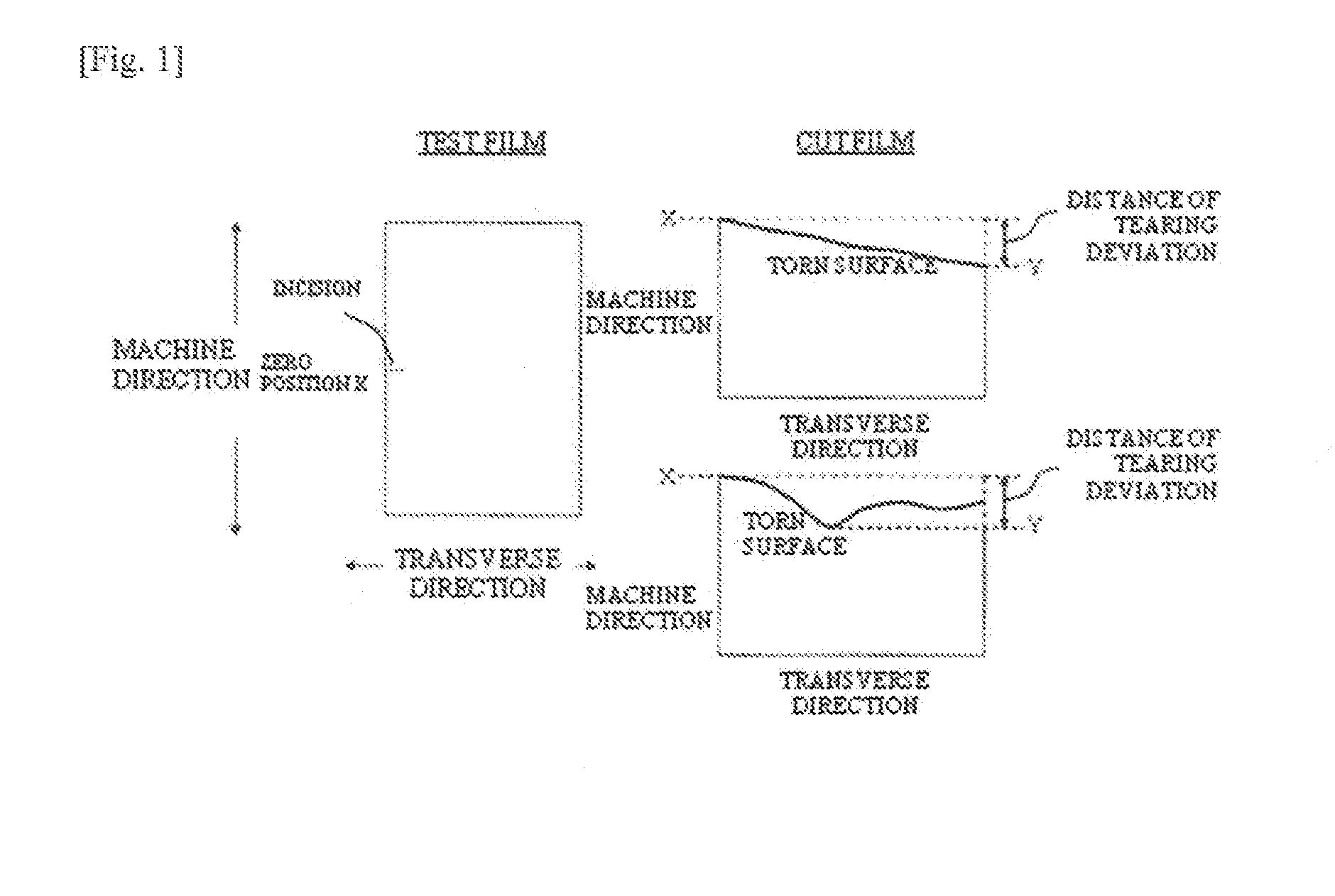Double-sided pressure-sensitive adhesive tape for fixing aircraft parts
a technology for aircraft parts and adhesive tapes, which is applied in the direction of adhesives, film/foil adhesives, adhesive types, etc., can solve the problems of increasing the risk of firing due to the elevated temperature and heat accumulation inside such appliances, and achieves excellent hand tearability, flame retardance and removability, and good hand tearability
- Summary
- Abstract
- Description
- Claims
- Application Information
AI Technical Summary
Benefits of technology
Problems solved by technology
Method used
Image
Examples
production example 1
[0135]Into a reactor equipped with a thermometer, stirrer, and reflux condenser were introduced 51 parts of 2-ethylhexyl acrylate, 42 parts of butyl acrylate, 5 parts of vinyl acetate, 2 parts of acrylic acid, 40 parts of ethyl acetate, and 0.18 parts of azobisisobutyronitrile as a polymerization initiator. The contents were heated with stirring and polymerized for 7 hours at the reflux temperature of the ethyl acetate. Thereafter, the reaction mixture was diluted with ethyl acetate and toluene to obtain a 50% solution of an acrylic resin (A-1).
[0136]The acrylic resin (A-1) obtained had a weight-average molecular weight of 600,000, a dispersity ratio of 5.0, a viscosity of 10,000 mPa·s / 25° C., and a glass transition temperature of −59° C.
production example 2
[0137]Into a reactor equipped with a thermometer, stirrer, and reflux condenser were introduced 88.4 parts of 2-ethylhexyl acrylate, 10 parts of isobornyl acrylate, 0.1 part of 2-hydroxyethyl methacrylate, 1.5 parts of acrylic acid, 40 parts of ethyl acetate, 14.5 parts of acetone, and 0.16 parts of azobisisobutyronitrile as a polymerization initiator. The contents were heated with stirring and polymerized for 7 hours at the reflux temperature of the ethyl acetate. Thereafter, the reaction mixture was diluted with ethyl acetate to obtain a 50% solution of an acrylic resin (A-2).
[0138]The acrylic resin (A-2) obtained had a weight-average molecular weight of 550,000, a dispersity ratio of 4.0, a viscosity of 5,000 mPa·s / 25° C., and a glass transition temperature of −59° C.
production example 3
[0139]Into a reactor equipped with a thermometer, stirrer, and reflux condenser were introduced 69 parts of 2-ethylhexyl acrylate, 23 parts of butyl acrylate, 5 parts of vinyl acetate, 0.1 part of 2-hydroxyethyl methacrylate, 2.9 parts of acrylic acid, 40 parts of ethyl acetate, and 0.22 parts of azobisisobutyronitrile as a polymerization initiator. The contents were heated with stirring and polymerized for 7 hours at the reflux temperature of the ethyl acetate. Thereafter, the reaction mixture was diluted with toluene to obtain a 46% solution of an acrylic resin (A-3).
[0140]The acrylic resin (A-3) obtained had a weight-average molecular weight of 650,000, a dispersity ratio of 5.8, a viscosity of 7,000 mPa·s / 25° C., and a glass transition temperature of −60° C.
PUM
| Property | Measurement | Unit |
|---|---|---|
| Fraction | aaaaa | aaaaa |
| Percent by mass | aaaaa | aaaaa |
| Energy | aaaaa | aaaaa |
Abstract
Description
Claims
Application Information
 Login to View More
Login to View More - R&D
- Intellectual Property
- Life Sciences
- Materials
- Tech Scout
- Unparalleled Data Quality
- Higher Quality Content
- 60% Fewer Hallucinations
Browse by: Latest US Patents, China's latest patents, Technical Efficacy Thesaurus, Application Domain, Technology Topic, Popular Technical Reports.
© 2025 PatSnap. All rights reserved.Legal|Privacy policy|Modern Slavery Act Transparency Statement|Sitemap|About US| Contact US: help@patsnap.com


